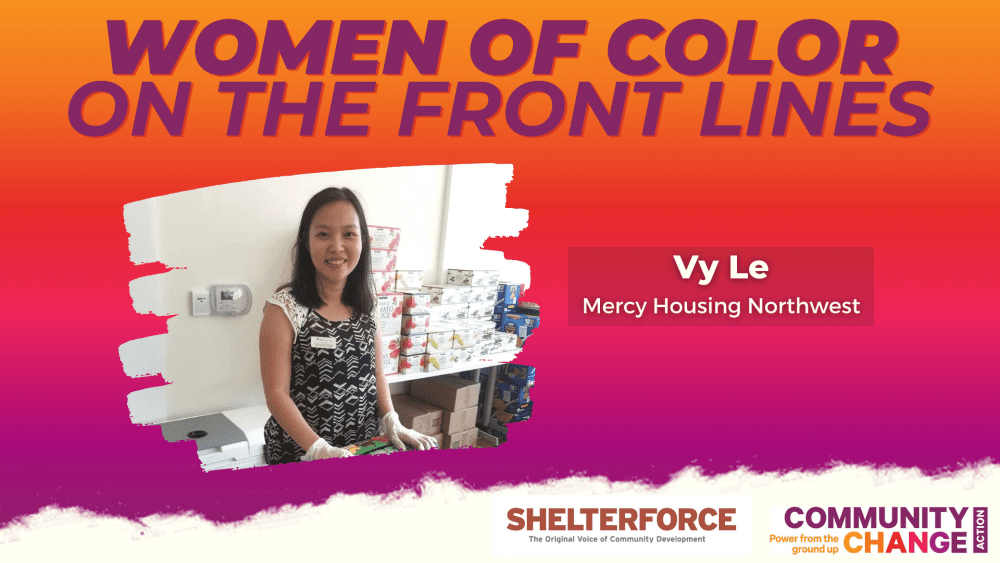
Perhaps the silver lining in all of this is an opportunity to rethink public policy about housing, wealth, access to credit, and more, through the lens of racial equity. We need to take a closer look at racial equity before and since the mortgage crisis, all while being honest about the crisis itself.
To start, there is the false narrative about what caused the crisis—or more accurately, who caused it. The narrative peddled by leading members of Congress in opposition to finance reform blamed “ill-informed borrowers or those unprepared for homeownership,” tricked into the American Dream by Fannie and Freddie. As the argument goes, mortgages went to naïve borrowers who simply could not afford them. Indeed, the Tea Party was birthed in part by rants about the government forcing taxpayers to “subsidize the losers’ mortgages.”
What we need to remember, however, are the facts surrounding the mortgage crisis, the fallout from the tightened credit market, and the loss of wealth among borrowers and families of color due to the foreclosure meltdown. We also need to recognize that wealth-stripping practices that have put households of color way behind their white counterparts are far from new.
Fannie and Freddie’s Affordable Housing Goals did not cause the crisis. In fact, the goals only put mortgages within reach for a slightly-larger handful, more low- and moderate-income families. Nor did low-down-payment loans or the Community Reinvestment Act cause the mortgage collapse.
What did happen, however, is that African-American wealth fell by more than half in the years following the Great Recession, largely driven by loss of home equity. Latino wealth dropped even more, by an astounding two-thirds (white households lost about 16 percent in the same time frame). These families were not “unprepared” for homeownership, nor were they “losers” looking for a bailout. These families were too often scammed by refinancing schemes or offered unnecessarily high-cost mortgages.
Black families, unlike other groups stripped of wealth during the crisis, had long been the target of discriminatory lending, land use, and other programmatic discrimination from federal, state, and local governments. In many ways, these more modern, less transparent practices are new versions of blockbusting, redlining, and other more historically explicit and planned strategies for limiting African-American buyers’ choices. Though new, these practices had the same effect: they segregated families of color into poorer, more slowly appreciating communities.
Many of these practices are outlined in a new report we released yesterday. A Downpayment on the Divide: Steps to Ease Racial Inequality in Homeownership underscores the historical, structural, and programmatic challenges to homeownership equality. In the report, we examine how in the early 20th century, the federal government, local authorities, and communities explicitly prohibited Black families from living in white neighborhoods. We also explore blockbusting, which directly led to the devaluation of homes in communities across the country.
Just as important, A Downpayment on the Divide lays out how predatory and discriminatory lending practices led to unnecessary foreclosures, loss of wealth, and the lowest homeownership rate for African Americans since before the adoption of the Fair Housing Act in 1968.
CFED, like many others, sees the Mortgage Interest Deduction as unnecessary for the majority of taxpayers who benefit from it, and believe its reform will provide an opportunity to advance first-time homeownership via a targeted tax credit. We also call out the need to support the Consumer Financial Protection Bureau as currently funded and organized. We also support Affordable Housing Goals for Fannie and Freddie—even if they are dissolved.
We have always seen these reforms as essential, but last week’s unveiling of President Trump’s “Skinny” budget for FY 2018 makes the critical nature of these reforms crystal clear. Despite the remarkable lack of details on revenues, economic assumptions, and entitlements, community stakeholders, housing advocates, and local leaders all released audible gasps at the sheer magnitude of the budget cuts aimed squarely at low- and moderate-income households in this country.
While administrations’ budgets are very much political documents, they are—in perhaps too cliché a way—moral documents as well. More to the point, while likely dead on arrival at Congress, the president’s budget proposal sheds light on the thinking underlying its text. Among a slew of key federal agencies, the budget would gut HUD. Critics are primarily—and rightly—looking at the document through the rental housing lens. Yet, as the White House proposes eliminating the CDFI Fund, legal aid services, NeighborWorks America, the Community Development Block Grant, and the HOME Investment Partnerships, among many others, we can reasonably speculate that the administration views affordable homeownership as unimportant to our economy and to many of the families that elected President Trump to office.
Housing advocates need to be clear on one point: policy matters. In this vein, CFED and others want to ensure that families and communities across the country are not again excluded from affordable, fair and sustainable homeownership—especially not because of the color of their skin.
(Image: Tim Evanson, via flickr, CC BY-SA 2.0)






Comments